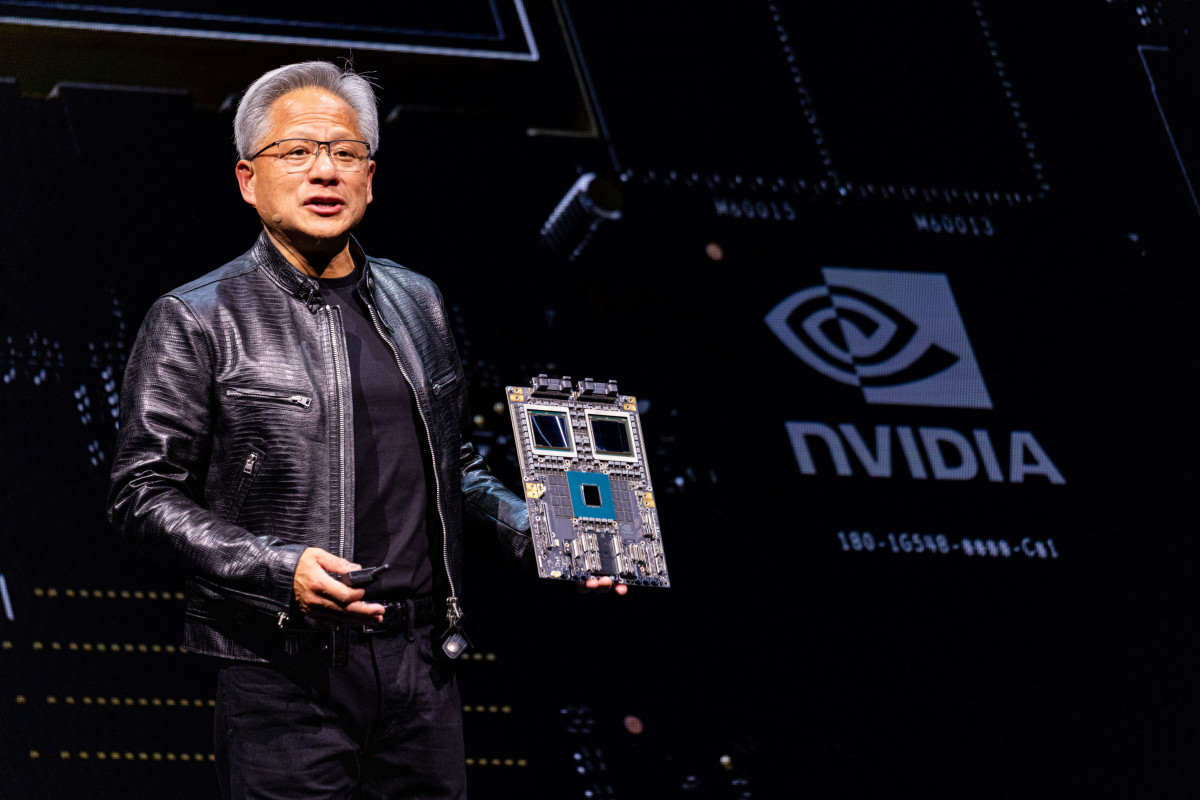
Nvidia shares powered higher in early Wednesday trading, boosted by gains from rival chipmakers and a bullish research note from a top Wall Street analyst.
Nvidia (NVDA) , which has lost nearly half a billion dollars of market value this month, its worst showing in nearly two years, amid a AI chip sales.
Investors, wary of the stock's astonishing gains over the past six months, have trimmed their holdings amid concern that the group's biggest customers, including hyperscalers such as Microsoft (MSFT) , Meta Platforms (META) and Amazon (AMZN) , will slow their capital-spending plans as they look to monetize billions in AI investments.
Nvidia is down over 23% from its closing high on June 18, the largest drawdown for the stock in 16 months. $NVDAhttps://t.co/l5IYmkeySJ pic.twitter.com/Y3UXN6mJLs
— Charlie Bilello (@charliebilello) July 30, 2024
Others have worried about a so-called air pocket in Nvidia's sales, where customers hold back on orders of its older H100 chips and wait for the launch of its new Blackwell GPUs later in the year.
Supply-chain snarls and increasing competition, particularly from Advanced Micro Devices (AMD) and its new MI300X series of GPUs, have also weighed on sentiment.
However, Morgan Stanley analyst Joseph Moore and his team say the recent stock pullback “presents a good entry point" for investors, and they added the stock to its Top Pick list for clients of the investment bank.
The bank left its $144 price target, as well as its overweight rating, unchanged with the group's second quarter earnings looming in late August.

Markets are taking what Moore and his team called "a very glass-half-empty view of some of the hyperscale comments" on spending, adding there its "a clear desire on the part of customers to continue to commit resources to developing multimodal generative AI."
A bullish outlook from AMD
AMD's bullish near-term outlook, published last night alongside the chipmaker's stronger-than-expected second quarter earnings, seem to support that view.
AMD saw sales from its MI series of chips top the $1 billion mark for the first time over the three months ending in June, and lifted its full-year sales forecast for AI GPUs by $500 million, taking it to $4.5 billion, even amid a restricted supply chain backdrop.
"We continue to see line of sight to continue increasing supply as we go through the second half of the year," AMD CEO Lisa Su told investors on a conference call late Tuesday. "And we'll continue to work both supply as well as demand opportunities, and really that's accelerating our customer adoption overall."
Microsoft, which is thought to be Nvidia's biggest customer, said last night that capital spending over its fiscal fourth quarter, which ended in June, rose more than 77% from last year to $19 billion, taking its full-year tally to around $56 billion.
CFO Amy Hood said spending this fiscal year would rise above that level, adding that "expenditures are dependent on demand signals and adoption of our services that will be managed through the year."
Related: Analyst puts Nvidia stock on watch; report points to new China chip
Morgan Stanley's Moore also cited solid demand prospects for both the H-series of Nvidia's AI chips, as well as its recently launched Blackwell offering.
The new Blackwell GPU architecture, named after the African American mathematician David Harold Blackwell, performs AI tasks at more than twice the speed of Nvidia's current Hopper chips, while using less energy and providing more bespoke flexibility, the tech group has said.
Nvidia holds commanding market share
Nvidia told investors in May that its second quarter revenue would rise to around $28 billion, with a 2% margin for error, even as it said the Blackwell system of processors and software wouldn't start shipping until the second half of 2024.
Related: Analyst resets Nvidia stock price target in chip-sector overhaul
“Visibility will actually increase as demand moves from Hopper to Blackwell, as the constraint will shift back to silicon," the Morgan Stanley team wrote. "H100 lead times are short, but H200 lead times are already long, and Blackwell should be even longer."
Morgan Stanley also sees evidence that customers are coming back to Nvidia products after sampling rival offerings, suggesting its dominant market position will likely endure well into the coming year.
More AI Stocks:
- Analyst adjusts Nvidia stock rating on valuation
- Analyst revises Facebook parent stock price target in AI arms race
- Google falling behind climate goals thanks to AI ramp up
“This is a large market and is not going to be served by a single Nvidia card, but we are hearing multiple instances of customers who have invested in custom silicon or alternatives coming back to Nvidia for upside,” Moore and his team said.
Nvidia shares were marked 10.75% higher in Wednesday afternoon trading and changing hands at $114.95 each, the highest level in a week and a move that pegs the stock's year-to-date gain at around 140%.
Related: Veteran fund manager sees world of pain coming for stocks







